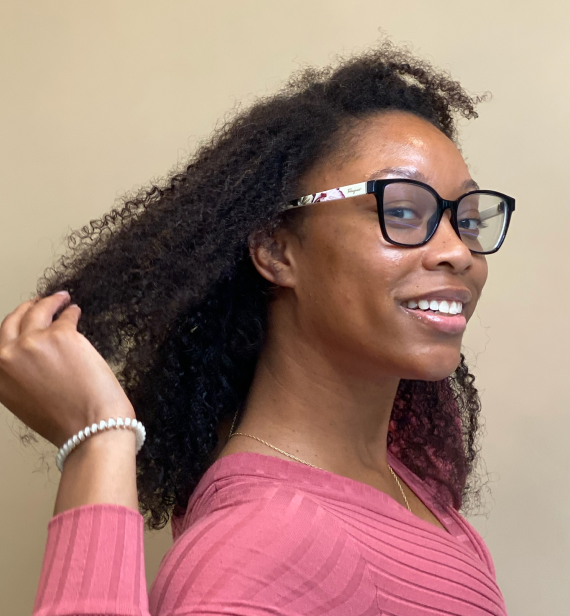3 Common Misconceptions Regarding Using Heat for Your Natural Hair
Wand curls styled by our peer mentor stylist, JC Dobson
Lord knows the Internet streets have caused many members of the natural hair community to become absolutely terrified of using heat on their natural hair, in fear of heat damage. We’re sure you’ve seen a ton of different “heatless” methods floating around the interwebs in an attempt to avoid heat damage.
As licensed stylists + tight curl educators, we’re here to set the record straight. Heat isn’t inherently “bad” and honestly using heat is necessary to achieve certain looks. Of course just like anything else, you have to have the proper knowledge and tools when using heat to achieve your desired result. This blog post will explore 3 common misconceptions regarding heat.
What Is Heat Damage?
According to licensed stylist + curl specialist, JC Dobson, heat damage is commonly defined as hair that has been straightened by hot tools to the point of curl relaxing or removal.
“I really like to call it curl damage because that’s actually what it is. True heat damage is when the hot tool is too high and singes the hair as if it were burnt. You can still have healthy hair with curl damage, but healthy hair can’t happen with heat damage.”
Misconception #1: Heat Styling Is Damaging to Curls
As we often discuss, proper fundamental hair care is the pillar for all successful styling options. Proper hair care would mean that you’re:
Cleansing your hair with a high quality shampoo on a consistent basis (every 5 to 7 days, depending on your lifestyle)
Using water soluble products and steering far away from raw oils and butters, avoiding food in the hair and any other Youtube hair trend
Partnered with a licensed stylist to receive regular maintenance cuts and more
According to our peer mentor stylist, JC Dobson, if you’d like maintain your curl integrity, she recommends that you do not heat style (blow outs, body curls, wand curls, etc) more than 2 to 3 times a year depending on your lifestyle and unique essential hair elements.
“In regards to going back and forth between heat styling and wash and go’s — once your curl is gone, your wash and go will not be the same. It won’t look good.”
Misconception #2: Air Drying Is Safer Than Using a Heat Source
This couldn’t be the furthest from the truth. Over at Black Girl Curls, we’re big fans of using a hood dryer to dry the hair.
A hood dryer forces warm air around the hair to speed the air forming of a set. The hair is locked in place quickly and not given time to frizz, loosen, shrink, or expand. This creates sets that are close to what the hair looks like wet. We find that the hair strand also retains more of the smoothness created during the setting process and therefore the dry set result can end up having more sheen/shine than any other drying method.
The heat from a properly working hood dryer is not dangerous to your hair. If your scalp or forehead skin can sit under the dryer and only feel like it is occupying a summer day in Florida, we promise the dryer heat is doing the same to your hair.
Alternatively, air drying has many cons such as:
No longevity
Easy to frizz
Shrinkage (not necessarily a con, but can help increase it)
Little to no sheen
Extremely long dry times
If you’re wondering how to go about purchasing a hood dryer, we typically recommend that you get one that fits within your space at home and is within your budget.
Inside of our consumer education platform, The SeeSomeCurls Visual Library, our community members have provided a full, extensive list full of specific hood dryer recommendations.
Misconception #3: Heat Styling Doesn’t Add to Length Retention
What actually aids into length retention is proper fundamental hair care and getting haircuts regularly and on time.
Behind the chair, it’s not unusual for us to see folks who have gone three to five years without a haircut. This results in reduced length retention, breakage, split ends, which can lead to the need for a drastic big chop.
Now why as naturals do we still need regular haircuts when we’re not doing a ton of manipulation or heat styling the hair? The reason why is because hair is a fabric. Your hair may be more like wool or may be more like silk but it’s all fabric.
Think about rolling the end of a piece of thread in between your finger. What does it do? It will roll around for a while but eventually the thread gets tangled, knotted, and even will begin to fray. The thickness and surface texture of the thread determines how long it takes for the damage to occur, but ultimately all fabrics will be damaged if the manipulation continues.
The ends are the oldest part of the hair, so it is imperative that we are doing maintenance cuts to thwart any frayed ends from spreading up the hair strand.
Are you in need of a curl specialist in your area? Our Curl Stylist Directory contains 150+ licensed, independent stylists across the US (even some abroad) who have taken education with our professional education arm, Cut It Kinky. If you’re unable to find a stylist in your area, check out these 3 helpful tips.
Want to view detailed blow out and wand curls video tutorials? We cover all the natural hair care fundamentals and more in our consumer education platform, The SeeSomeCurls Visual Library.
Our 1.1K+ community of tight curl + naturals are shaving more than 50% of time off their wash day, being showered left and right with hair compliments, and are receiving direct support of a very encouraging community of tight curlies + naturals who have been exactly where you are.




